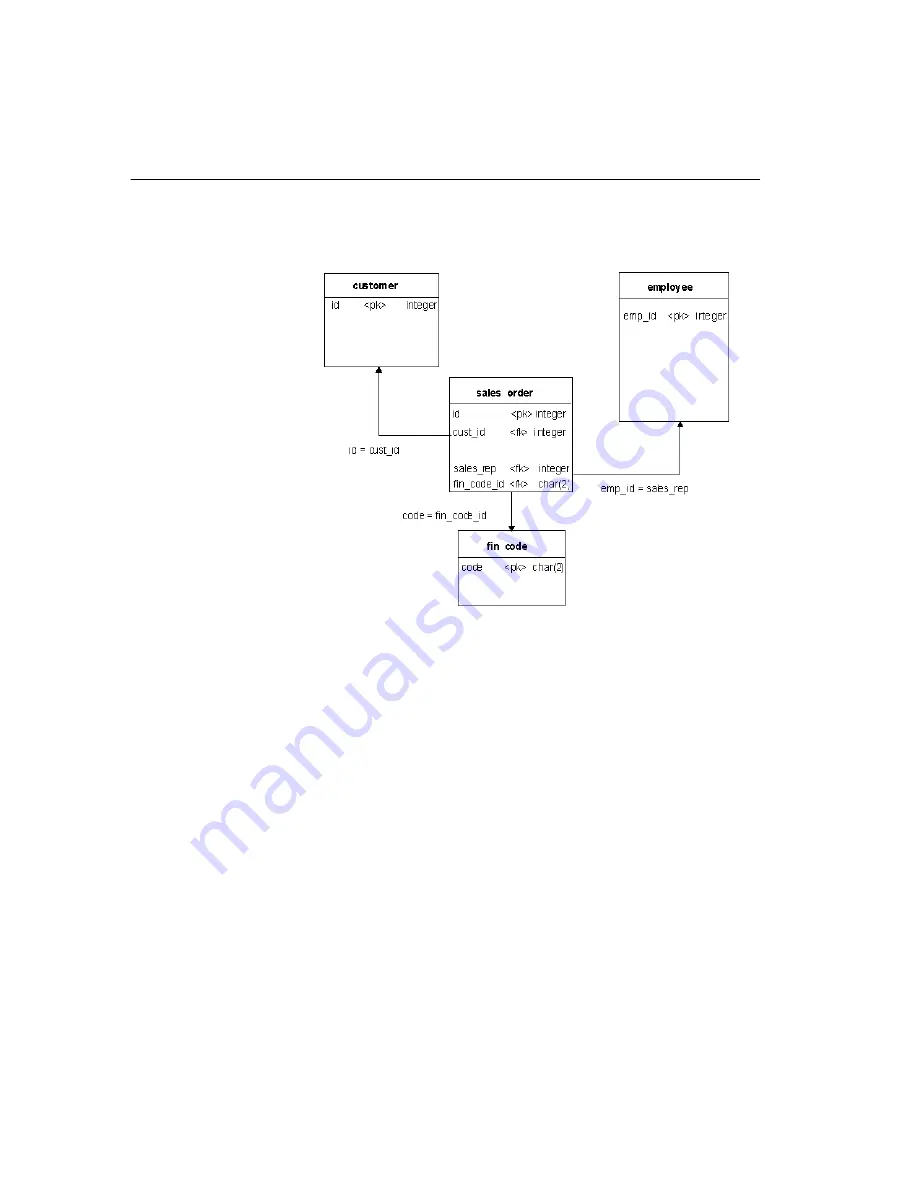
Using join indexes
166
Example
In the sample database used throughout this book, the
sales_order
table
contains three foreign keys, each of which is related to the primary key of
another table.
You can create this table using the following commands:
CREATE TABLE "DBA"."sales_order"(
(
"id" integer NOT NULL,
"cust_id" integer NOT NULL
REFERENCES "DBA"."customer" ("id")
UNENFORCED,
"order_date" datetime NOT NULL,
"fin_code_id" char(2) NULL
REFERENCES "DBA"."fin_code" ("code")
UNENFORCED,
"region" char(7) NULL,
"sales_rep" integer NOT NULL
REFERENCES "DBA"."employee" ("emp_id")
UNENFORCED,
PRIMARY KEY ("id"),
);
As shown in the figure, the
sales_order
table is at the center of the star join.
Each of its foreign key columns can contain many instances of the primary key
it refers to. For example, if you enter:
Summary of Contents for Adaptive Server IQ 12.4.2
Page 1: ...Administration and Performance Guide Adaptive Server IQ 12 4 2 ...
Page 16: ...xvi ...
Page 20: ...Related documents xx ...
Page 40: ...Compatibility with earlier versions 20 ...
Page 118: ...Troubleshooting startup shutdown and connections 98 ...
Page 248: ...Importing data by replication 228 ...
Page 306: ...Integrity rules in the system tables 286 ...
Page 334: ...Cursors in transactions 314 ...
Page 396: ...Users and permissions in the system tables 376 ...
Page 438: ...Determining your data backup and recovery strategy 418 ...
Page 484: ...Network performance 464 ...
Page 500: ...System utilities to monitor CPU use 480 ...
Page 514: ...Characteristics of Open Client and jConnect connections 494 ...
Page 536: ...Index 516 ...
















































